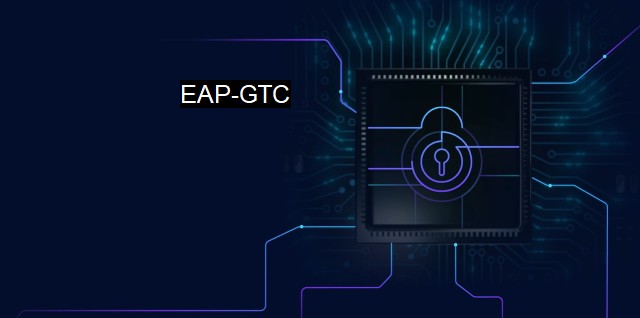What is EAP-GTC?
Exploring EAP-GTC Protocol: An Advanced Authentication Technology for Cybersecurity and Wireless Networks
EAP-GTC, which stands for Extensible Authentication Protocol Generic Token Card, is a widely used protocol in cybersecurity landscapes to secure systems and protect them against cyber threats and unauthorized access. Including it as part of a threat detection ecosystem, including antivirus software, allows for greater protection and restricts unauthorized access toward internal/enterprise network settings.To talk about EAP-GTC effectively, one must first understand the function of the EAP, or Extensible Authentication Protocol. EAP is an authentication framework generally used in the security domain, supporting multiple authentication strategies. Rather than a particular method, EAP embodies a universal protocol for combining systems and applications with the capacity for password-based, token-based, certificate-based, or biometric authentications.
EAP-GTC, established by Cisco, is an extensible and universal process that was initially developed to support various authentication mechanisms such as token cards, smart cards, certificates, and public key authentication. It is embodied as a flexible mechanism, providing explicit support to a wide memo board of token card-based and other custom security settings.
EAP-GTC operates by securing the connection between the user and the server in question, done using distinct client-server model methods. The user's credentials, once entered, are sent to the server to check their eligibility. If the access credentials are valid, a verified message is sent back, facilitating user access. The protocol is quite versatile and flexible, enabling more complex cryptographic cybersecurity procedures, chiefly when used conjointly with other wireless security protocols.
In the context of antivirus and cybersecurity, the EAP-GTC protocol offers an essential role. This mechanism provides an essential tier in maintaining the security layers of an operating system, protecting a network from hackers and avoiding unauthorized gateways.
Exploiting EAP-GTC can also prove quite significant in tethering and incorporating intrusion prevention systems, firewall monitoring, and antivirus solutions. To illustrate, an antivirus system protected with EAP-GTC imposes another sturdy layer of security, challenging for intruders to breach. On finding a virus or malicious entity, the antivirus, functioning with the protocol, sends security alerts to the control center, allowing for immediate action and protecting the system from aggressive threats threatening to infiltrate the database.
EAP-GTC also works cost-effectively for endpoint security and Multi-factor Authentication (MFA), such as one-time passwords or biometric/RFID-based authentications. Thus safety is amplified at an incredibly flexible and scalable rate.
Generally, adaptation to technologies like EAP-GTC are seen in enterprise-grade antivirus solutions and identity-based solutions to tackle the venoms of cybersecurity threats more effectively. In today's vulnerable age of swelling cyber threats, adopting such EAP-GTC could build an undeniably vigorous, acceptable authorization environment to guard the enterprise-grade network setups. This induces a crucial deed toward formulating surefire collaborations with clients and affiliates by proving a secure background.
Though advanced EAP-GTC is impressionably comprehensible in implementation, thereby, broadly turbocharging its utility in the tracks of dynamic cybersecurity Orbit. Hence, EAP-GTC, a broadly adopted authentication method both for wired and wireless connections, is serving as a meaningfully versatile tool in the bucket of information and cybersecurity.
It's an absolute imperative to call the employment of EAP-GTC in planning a serviceable cybersecurity strategy more foreseeable in the offing. Indeed, it considerably speeds up the nearing evolution of an emergent digital age that is - informed, more safe-proof, and secure while operating various security channels under a fortified setup.

EAP-GTC FAQs
What is eap-gtc in the context of cybersecurity?
EAP-GTC is an Extensible Authentication Protocol (EAP) that provides authentication and secure communication between a client and a network. It is used in the context of cybersecurity to ensure that only authorized users can access a network, and to protect against unauthorized access and data breaches.How does eap-gtc work?
EAP-GTC works by authenticating users based on their login credentials, which are transmitted securely over the network. The client sends its login ID and password to the network, which verifies the credentials and allows the client to access the network. EAP-GTC also encrypts the communication between the client and the network, ensuring that data cannot be intercepted or tampered with by unauthorized users.What are the benefits of using eap-gtc in antivirus software?
Using EAP-GTC in antivirus software adds an extra layer of security to protect against malware and other threats. It ensures that only authorized users can access the software and its data, preventing hackers and other unauthorized users from gaining access. EAP-GTC also encrypts communication between the antivirus software and the network, preventing interception or tampering of sensitive data.Is eap-gtc compatible with all cybersecurity technologies?
EAP-GTC is compatible with many cybersecurity technologies, including VPNs, firewalls, and antivirus software. However, it may not be compatible with all software and may require additional configuration or setup to work properly. It is important to consult with a cybersecurity expert to determine if EAP-GTC is the right authentication protocol for your specific needs and software.| | A | | | B | | | C | | | D | | | E | | | F | | | G | | | H | | | I | | | J | | | K | | | L | | | M | |
| | N | | | O | | | P | | | Q | | | R | | | S | | | T | | | U | | | V | | | W | | | X | | | Y | | | Z | |
| | 1 | | | 2 | | | 3 | | | 4 | | | 7 | | | 8 | | |||||||